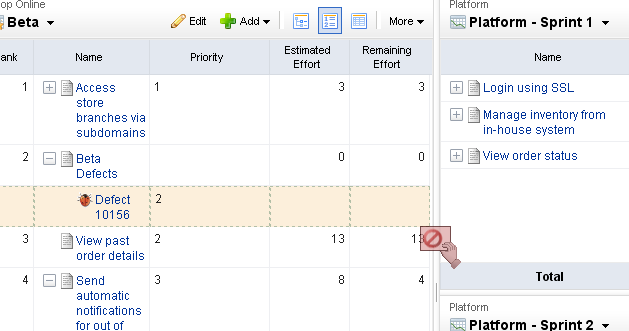Planning a Sprint
Sprints can be planned after release backlogs have been defined, prioritized, and estimated. Moving stories from a release or team backlog into a team's sprint backlog is a simple matter of using drag-and-drop to move a work item from one backlog to another. To move a work item into a sprint backlog, simply click the work item (and hold down the mouse button) while you drag it from one backlog to another.
- Select the work item you want to move, click and hold down the mouse button.

- When you get the work item to the new backlog, release the mouse button.

- The backlog will refresh with the updated work item list.
